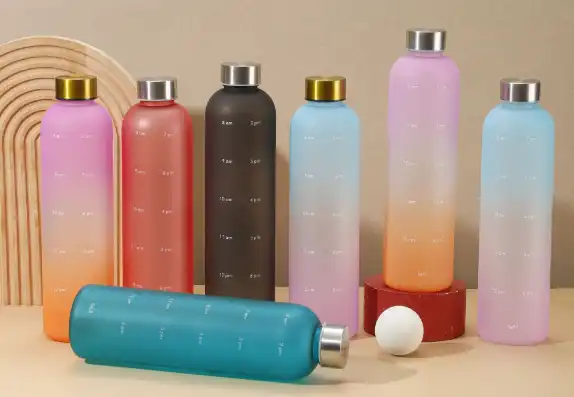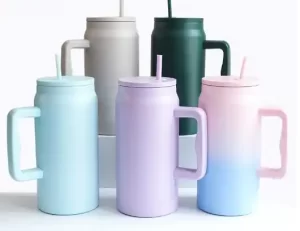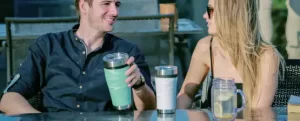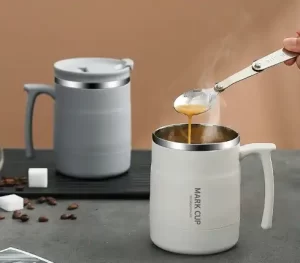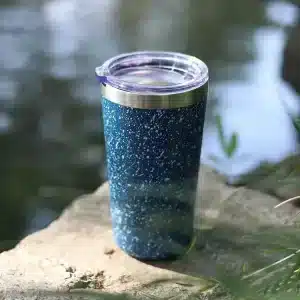FuWinn, a promotional supplier, has been committed to the recycling industry years, and the term “RPET” is not unfamiliar. However, many customers ask us to make RPET products, but sometimes they also ask what it is specifically.
The R (recycle) in RPET means recycling, and PET is polyethylene terephthalate, which is abbreviated as PET. This material is a high polymer, which is obtained by the dehydration condensation reaction of ethylene terephthalate, in which ethylene terephthalate is obtained by the esterification reaction of terephthalic acid and ethylene glycol. FuWinn can product rPET water bottle with rPET certificate as well.
Putting aside the above professional terms, we can simply understand RPET as recyclable PET recycled material. PET is our common plastic bottle, and RPET is obtained by special processing such as sorting, crushing and cleaning of discarded plastic bottles. It can be applied to many fields of life through spinning processing, and its commercial value and environmental significance are also extraordinary. So RPET is more ECO-friendly.
As a major exporting country, what contribution do we make to RPET?
Let’s talk about the role of RPET from two aspects.
1. Analysis from the market level
Our country is a major producer and seller of PET. In the context of global plastic environmental pollution control and dual carbon, there is a lot of room for its recycling and reuse. According to statistics and estimates by the Plastic Recycling Branch of the China Synthetic Resin Association, the total amount of waste plastics recycled in my country in 2020 was 40.59 million tons, of which PET recycled 5.68 million tons, accounting for about 14% of the total recycling; by 2021, the amount of PET recycled was 5.5 million tons. Although the data has declined slightly, the simultaneous increase in recycling volume and price has led to a significant increase in the output value of waste plastic recycling in my country, an increase of 33% year-on-year to 105 billion yuan in 2020.
2. Analysis from the application level
From PET bottles to RPET, the consumption ratio of chemical fiber RPET products in my country is as high as 81%, which is the highest RPET consumption area at present. Many consumer brand companies require a 30% recycled material ratio to extend the use cycle of PET. According to industry insiders, if 100% recycled materials are used all the time, PET bottles can be recycled for up to 8 times, after which the product performance is significantly reduced, not only the texture is more brittle, but also the color will turn yellow.
Of course, some companies have proposed to use 100% RPET. For example, Pepsi and Coca-Cola have proposed or launched 100% RPET beverage packaging bottles. Based on my country’s national conditions, I believe that this will be a big challenge to the quality and processing technology of recycled raw materials.
Why promote RPET plastic bottles?
The high consumption of PET plastic beverage bottles in our country presents both an environmental challenge and an opportunity. RPET plastic bottles can significantly reduce environmental pollution and turn waste into valuable resources.
Recycling one ton of PET plastic bottles yields the following benefits:
– 67,000 plastic bottles repurposed
– Reduction of 4.2 tons of carbon dioxide emissions
– Savings of 0.0364 tons of oil
– Conservation of 6.2 tons of water
Despite these advantages, only a small portion of PET bottles is currently recycled, with the majority being discarded and causing resource waste and environmental pollution. Therefore, improving recycling technology for PET bottles holds great potential.
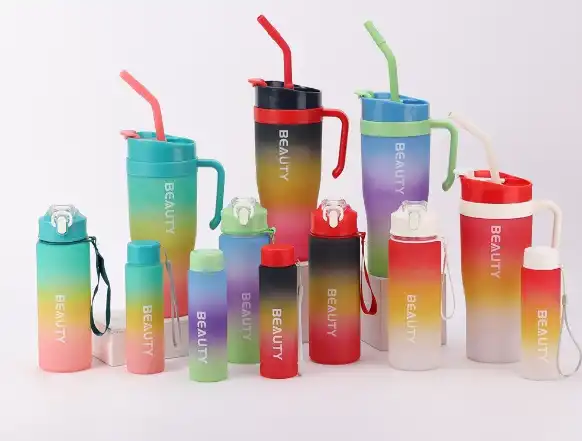
1.Material Benefits
Recycled PET fabric, also known as recycled polyester or RPET fabric, is an innovative, eco-friendly material. It is derived from discarded mineral water and cola bottles, often referred to as cola bottle environmentally friendly cloth. This product is highly popular in developed countries across Europe and America due to its sustainable nature.
2.Processing Technology
The production of RPET fabric involves using recycled fiber materials from coke bottles. These bottles are crushed into pieces and then spun into yarn. This recycling process not only reduces carbon dioxide emissions but also saves nearly 80% of the energy required by conventional polyester fiber production methods.
3.Environmental Impact
RPET yarn and fabric can be recycled and reused, leading to significant energy savings, reduced oil consumption, and lower carbon dioxide emissions. For instance, every pound of recycled RPET fabric saves 61,000 BTUs of energy, equivalent to 21 pounds of carbon dioxide. This contributes to reducing air pollution and mitigating the greenhouse effect.
In summary, promoting RPET offers substantial environmental, economic, and technological benefits, making it a promising solution for sustainable development.
4. The dyeing perspective
After environmentally friendly dyeing, environmentally friendly coating and calendering, the fabric can pass the testing of international standards such as MTL, SGS, and ITS. Among them, environmental protection indicators such as phthalates (6P), formaldehyde, lead (Pb), polycyclic aromatic hydrocarbons, and nonylphen have met the latest European environmental standards and the latest American environmental standards. At the same time, it has passed the authoritative certification of the Taiwan Environmental Protection Agency, the US SCS Environmental Protection Agency, and the European Oeko-Tex Standard 100 ecological environmental protection certification, and has a higher international recognition.
5.Perspective of high temperature resistance
It can withstand high temperatures (i.e. hot cars) without deformation, is resistant to breakage, and has a smooth surface. RPET has strong chemical properties and can prevent the leakage of microorganisms and chemicals (this is why RPET is used in many cosmetic products). Therefore, RPET can be used for products with a long shelf life.
What is the demand for rPET in Europe?
The demand for rPET in Europe is constant and strong.
According to ICIS, the colorless and transparent rPET bottle flakes in the southern and eastern European markets rose sharply this week due to the increase in bottle brick costs and the improvement in demand that pushed up the bottle flake prices.
Among them, the price of colorless and transparent bottle flakes in southern Europe rose by 80-100 euros this week. The FD (free delivery) price in Spain has reached 1050 euros per ton, while the FD bottle flake price in Italy has reached around 1150. The price of bottle flakes in Eastern Europe also rose by 50 euros per ton, and the price of high-end product FD exceeded 1,000 euros per ton.
In addition, the price of food-grade rPET particles continued to rise. The price of high-end product FD in Northwestern Europe exceeded 1,400 euros per ton. Buyers usually want lower prices, but they also accept higher offers, showing their willingness to lock in supply quantities.
At present, European demand is multifaceted, and destocking is still continuing, but it is difficult to predict how long it will last. In the sheet field, the demand for recycling has increased due to the increase in virgin prices, but if recycled bottle flakes continue to rise, the price difference with virgin will be reduced or evened out.
Overall, the European rPET market remains strong, and the limited supply of recycled bottle flakes and strong demand have increased the price of bottle flakes. The market outlook entering March is still very optimistic.
Against the backdrop of global attention to the garbage problem, both environmental protection organizations and companies from all walks of life have made commitments and taken actions.
Recently, Volvo announced that starting from 2025, at least 25% of the plastic used in each new model must be made of recycled materials; Starbucks announced that its stores will completely eliminate disposable plastic straws by 2020, and replace them with paper, compostable plastics, etc., or straws made of recyclable materials, or directly abandon straws and use suction cup lids; Nike, Puma and other well-known sports brands are also promoting or launching sports products made of recyclable materials. Objectively speaking, “environmental protection” and “sustainability” have become indispensable labels for companies.
So to use of environmentally friendly recycled plastics or adopting sustainable alternatives can is quite important. On the one hand, effectively fulfill the company’s social responsibility, and on the other hand, it can also create topics and attract attention for the company, win consumer support, and not lag behind competitors. It is a positive marketing method. FuWinn is always to do the help to all of our customers if you need RPET plastic bottles.

